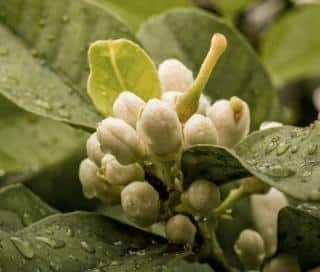

Watering, for the lemon tree, is an important factor in enabling proper growth as seasons come and go. It plays a key role in blooming, fruit formation, and, consequently, on the lemon harvest. Whatever the season – spring, summer, fall – here are the good practices to follow to correctly match your lemon tree’s water needs.
The water needs of the lemon tree are high, even more so when it’s grown in pots. Indeed, a potted lemon tree simply cannot dig deeper in the soil as it searches for water. To make things worse, potted plants suffer more from heat since the roots are above ground level.
The first year after planting is when you most need to manage water needs. Over that first year, you’ll have to water nearly every single day. After that, you’ll only have to water in times of heat or drought. Watering in the evening is best by far, in small amounts, but on a regular basis. You can also give the plant fertilizer during the watering sessions. Do this several times a year, and it will boost flower formation, fruit set, and lemon quality and size.
As you water, always try to avoid getting leaves wet: this is the best way to keep fungal diseases from appearing.

Giving your potted lemon tree fertilizer is even more important than when it’s growing in the ground: nutrients wash out from the bottom, and they’re also depleted as the plant grows. In pots, soil degrades very fast: you must compensate this by adding fertilizer once or twice a month.
Of course, in winter, you must stop adding fertilizer completely, and only water with very small amounts.
Also make sure water never collects and sits at the bottom of the pot, even simply in the saucer underneath.